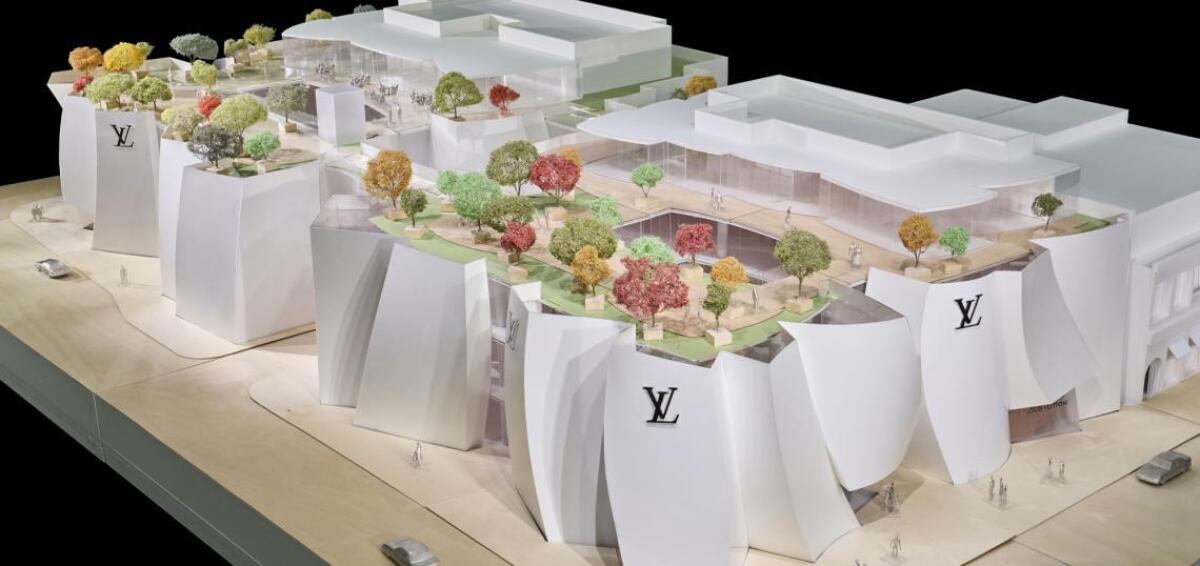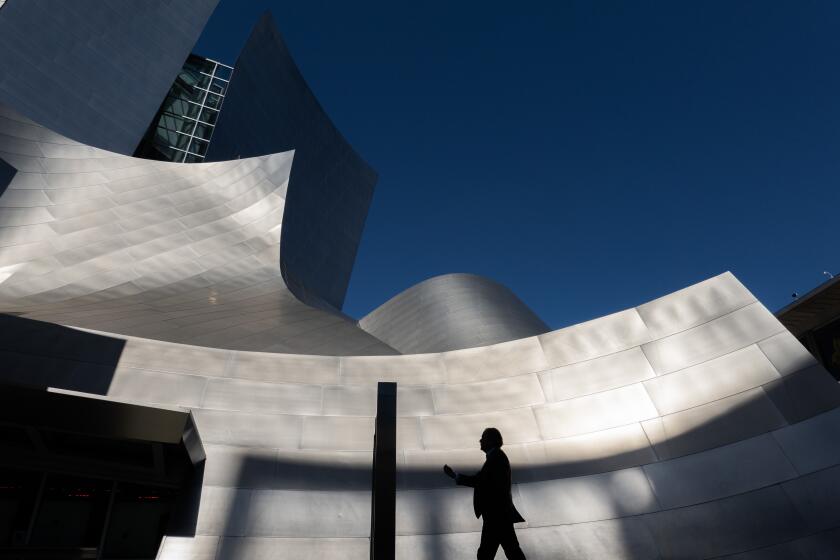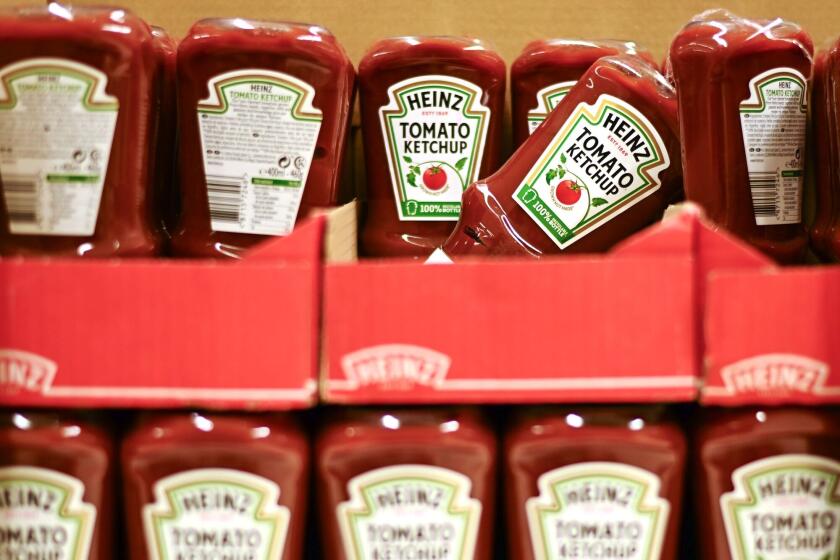Louis Vuitton bets big on Rodeo Drive with new Frank Gehry-designed store

- Share via
Louis Vuitton is gearing up to go over the top again in Beverly Hills.
With plans for an ultra-opulent hotel on Rodeo Drive stymied by voters two years ago, the Paris fashion house’s owners are back with a proposal for a theatrical flagship store designed by architect Frank Gehry that would anchor the north end of the famous retail corridor.
Luxury goods stores on Rodeo Drive are growing larger as top-shelf retailers increasingly up the ante to dazzle shoppers, and the vision from Louis Vuitton owner LVMH is one of the biggest stores yet with restaurants, rooftop gardens and exhibition space.
Set to open in 2029 pending city approval, the store will stretch through the block from Rodeo Drive to Beverly Drive along South Santa Monica Boulevard. It will be one continuous structure connected across an alley by two pedestrian bridges and a tunnel.
Louis Vuitton said its new store will contain 45,000 square feet on the retail side fronting on Rodeo Drive and an additional 55,000 square feet on the hospitality-focused side of the building off Beverly Drive.
“The new location will take visitors into a full Louis Vuitton lifestyle experience showcasing its diverse universes of products and one-of-a-kind client experiences,” the company said in a statement.
Bunker Hill is primed to elevate its status as the region’s leading arts center even as the area around it struggles with persistent homelessness and post-pandemic losses of office tenants.
The retail entrance will be on Rodeo Drive, with three floors dedicated to product categories such as women’s and men’s collections, travel, watches and Jewelry, beauty and fragrance. A rooftop level will have private spaces for clients and a garden.

Visitors entering from Beverly Drive will find a cafe and exhibition lobby on the ground floor, two more floors of exhibition space and a rooftop with a restaurant and open-air terrace.
Louis Vuitton representatives declined to offer more details about the exhibitions or the building, but the brand perhaps best known for its signature monogrammed handbags and luggage also has made a reputation promoting art and culture.
In 2014 it opened the Fondation Louis Vuitton in Paris in a building designed by Gehry. The Fondation has art exhibits, concerts, dance performances and organized family activities such as art classes for children.
Gehry has also also collaborated with Louis Vuitton on a collection of handbags reflecting his architectural style, which is known for flowing, curvilinear sculptural forms.
In downtown Los Angeles, Gehry designed the Walt Disney Concert Hall, the Grand L.A. mixed-use complex across the street and the nearby Colburn School performing arts center under construction.
The interior of Luis Vuitton’s Beverly Hills flagship is being designed by another well-known architect, Peter Marino, who designed the existing Louis Vuitton store on Rodeo Drive and the ill-fated Cheval Blanc Beverly Hills hotel intended for the Rodeo Drive site now selected for Louis Vuitton’s new flagship.
The billion-dollar Rodeo Drive project backed by French multibillionaire Bernard Arnault had been approved by the Beverly Hills City Council.
New York-based Marino was described by Architectural Digest as “a leading architect for the carriage trade, and the architect for fashion brands.”
Marino once said the Chevel Blanc hotel, which was approved by the city before being vetoed by voters, would improve the pedestrian experience on the northern edge of Rodeo Drive’s famed shopping district, where “people get to the end, shrug their shoulders and walk back.”
The parcels intended for the hotel and now Louis Vuitton are owned by LVMH and were formerly occupied by Brooks Bros. and the Paley Center for Media. The existing unoccupied structures will be razed to make way for the new store.
Merchants on the famous three-block stretch of Rodeo Drive constantly strive to find new ways to call attention to themselves and polish their brand’s image, said real estate broker Jay Luchs of Newmark Pacific, who works on sales and leases of high-end retail properties.
“It’s competitive among brands to always be the best they can be, and they’re not sitting on spaces keeping them stale,” he said. “They’re all always reinventing themselves.”
The expensive changes to their stores are “very obvious,” Luchs said. “It’s almost like an art. The street has different top designers who have made these stores spectacular one after the other.”
Even though retail rents on Rodeo Drive are some of the highest in the country, stores are also getting bigger, the property broker said.
Fifteen years ago, stores on the street were typically 25 feet wide, he said, then gradually many became 50 feet wide, he said. “Now you’re seeing stores 100 feet wide” that may have two different landlords.
A 50-foot lot is “very big,” Luchs said, and can hold a store with 5,000 square feet on each level and may go three stories tall for a total of 15,000 square feet in the store.
The fashion house is also growing in New York, where its flagship store is being replaced with a building that will nearly double its footprint on 57th Street at 5th Avenue, the Architects Newspaper said. Construction has been concealed with a facade that looks like a giant stack of distinctive Louis Vuitton trunks.
More to Read
Inside the business of entertainment
The Wide Shot brings you news, analysis and insights on everything from streaming wars to production — and what it all means for the future.
You may occasionally receive promotional content from the Los Angeles Times.













